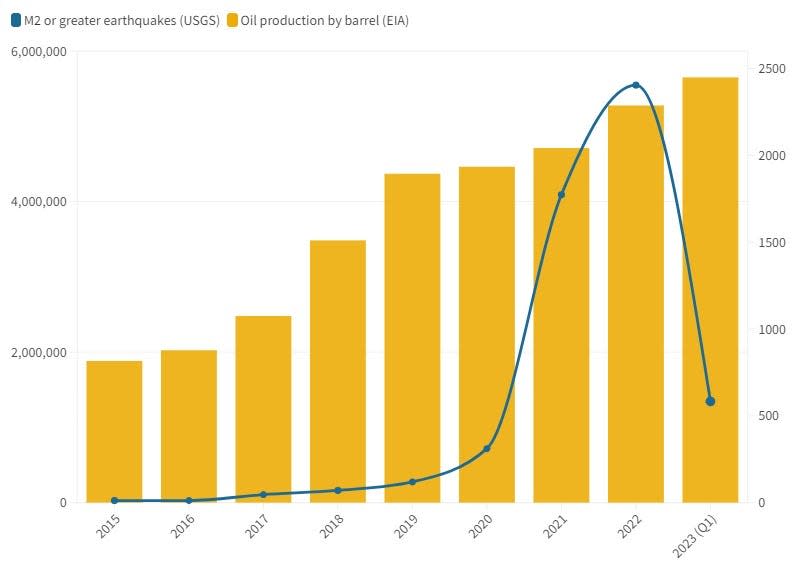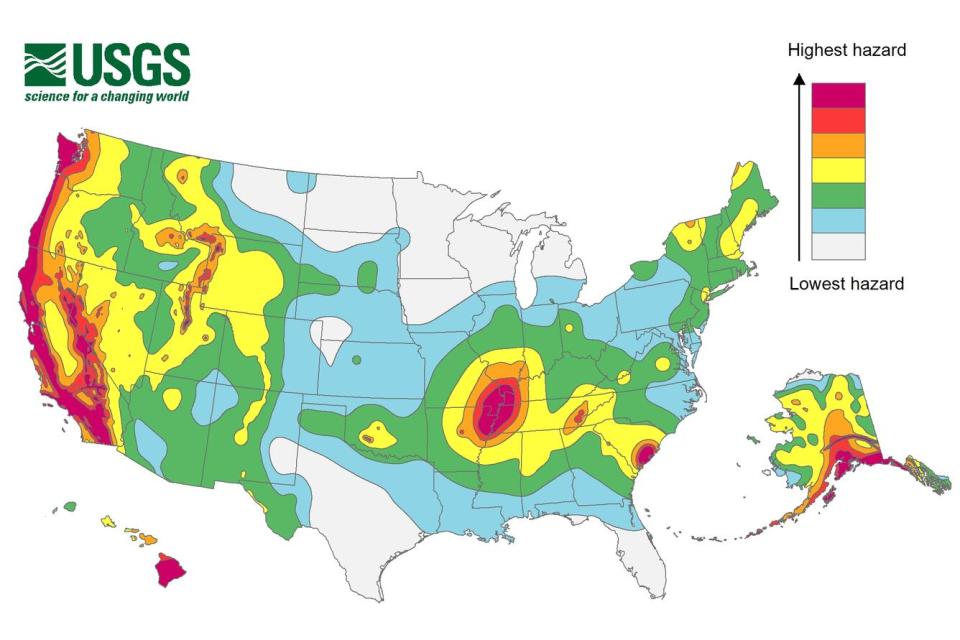Can smaller tremors protect New Mexico from oil and gas earthquakes in Permian Basin?
Small “tremors” could prove a solution to New Mexico’s earthquake problem arising from oil and gas operations, according to recent research from the University of California.
A study published in August in the journal Science suggested setting off light tremors, which can’t be felt on the surface by people but measured using seismic equipment, could help oil and gas operators understand the geology underground.
This could help place oil and gas drilling or wastewater disposal wells to avoid triggering larger and potentially dangerous earthquakes, said the study’s lead author Abhijit Ghosh, an associate professor of geophysics at the University of California.
More: Shaky Ground: The link between the Permian Basin's fossil fuel industry and earthquakes
He admitted there was no true way to fully predict earthquakes, but the tremors could help identify locations likely sensitive to the pressure induced by injection.
This research could aid oil and gas producers in the Permian Basin, the U.S.’ busiest oilfield in southeast New Mexico and West Texas, where a string of earthquakes was recently tied to wastewater injection from the fossil fuel industry.
The industry injects millions of gallons daily in the region of produced water. Produced water is brought to the surface with crude oil and natural gas during hydraulic fracturing, or “fracking.”
More: Fault lines at Texas-New Mexico border complicate earthquakes linked to waste water disposal
And as oil production grew in the Permian, so did the quakes.
In 2019, with oil production at about 4.3 million bpd, there were 119 earthquakes at Magnitude 2 or higher, according to the U.S. Geological Survey.
The number of recorded quakes increased in the years since from 311 events in 2020 to 1,773 in 2021.
More: Industry, regulator cooperation dampened Oklahoma's quaking issues over time
In 2022, there were 2,404 earthquakes at M 2 or greater.
So far this year, the region had 1,409 quakes at M 2 or greater as of Oct. 3, the USGS reported, about 157 per month, meaning the quakes were on pace for a reduction by the end of 2023 at 1,878 quakes in the last three months of the year.

‘Tremors’ to aid oil and gas industry’s well planning
That dip came after regulatory responses from state agencies in both New Mexico and Texas, aiming to shift disposal operations away from areas where the seismic activity appeared clustered – largely along the Texas-New Mexico in the northern portion of the Permian’s western Delaware sub-basin – and reduce the volumes of injected wastewater.
More: Oil and gas is 'deforming' New Mexico's land, study says, as drilling set to grow
But Ghosh said his team’s research could better inform proactive industry decision-making on where to place the wells, and their likely impact on seismicity when operational.
“Typically, when you inject high pressure fluid underground, it produces small earthquakes. That is known,” Ghosh said. “What we showed in addition to the garden-variety earthquakes, it produces another signal we call a tremor.”
Earthquakes cause underground rocks to shift quickly along fractures known as faults, creating the ground shake people feel at the surface.
From the editor: Is New Mexico ready for increasing earthquakes? That's what our reporting is tackling
Tremors cause a much slower slipping, Ghosh said, meaning they can be triggered safely with little risk above ground.
“These tremors can be used to study the rocks in a formation, and how and where it’s moving,” he said. “It is a benign, non-damaging way to study the rock and the formation. They give you a tool to make injection decisions.”
The study was conducted in Wellington Field, Kansas, and saw researchers inject liquid carbon dioxide (CO2) underground, then measure the resulting tremors in an area where oil and gas companies have targeted the Arbuckle Formation for extraction.
More: Did you feel that? New Mexicans can report feeling an earthquake to help track data.
They found the tremors occurred along the same faults where earthquakes could be triggered and concluded they could use them to map areas of increased geological stress.
“The occurrences of these tremor events have implications for the subsurface movement of injected fluids,” read the study. “Observations of these low-frequency tremor events and their source locations can help us track deformation, fracture location, and movement of injected fluids in the subsurface around the injection well.”
They can also track how fluids move underground, the study read, potentially increasing understanding of where future earthquakes could occur around an injection site.
More: Permian Basin oil production dips although projections show growth in coming years
“The injection rate of fluids for disposal and enhanced oil recovery purposes is monitored carefully to prevent induced earthquakes from increasing in frequency and magnitude,” read the study. “Therefore, observations of such tremor events, their source locations, and their spatiotemporal distribution may provide a useful and benign way of tracking the migration of injected fluids.”

Fracking a ‘reality’ that must be made safer
In the Permian Basin, oil and gas extraction and the resulting wastewater injection was likely to continue for the foreseeable future, with the region generating about 5.7 million barrels of oil per day in October – the most of any other shale region in the U.S. – according to the Energy Information Administration (EIA).
The Permian was also the second-most productive natural gas region in the nation, generating 23.7 billion cubic feet per day, the EIA reported.
More: New Mexicans call for end of oil and gas during United Nations climate summit
Ghosh said his work could make the reality of growing fracking operations safer from increasingly-threatening earthquakes.
“The reality is we’re doing the fracking. What we can do is make the process safer,” he said. “We know these tremors are useful and can be detected. This will help get some additional information and make better-informed decisions.”
Next, Ghosh said researchers hope to study the tremors in other oil and gas regions like the Permian, potentially developing a streamlined process that can be adopted by the industry.
“I think that is better for society. This type of study will give you tools that will make it safer,” he said. “We still cannot predict earthquakes, but this will help you safely monitor.”
Adrian Hedden can be reached at 575-628-5516, achedden@currentargus.com or @AdrianHedden on X, formerly known as Twitter.
This article originally appeared on Carlsbad Current-Argus: 'Tremors' could be used to avoid earthquakes in New Mexico oilfield

